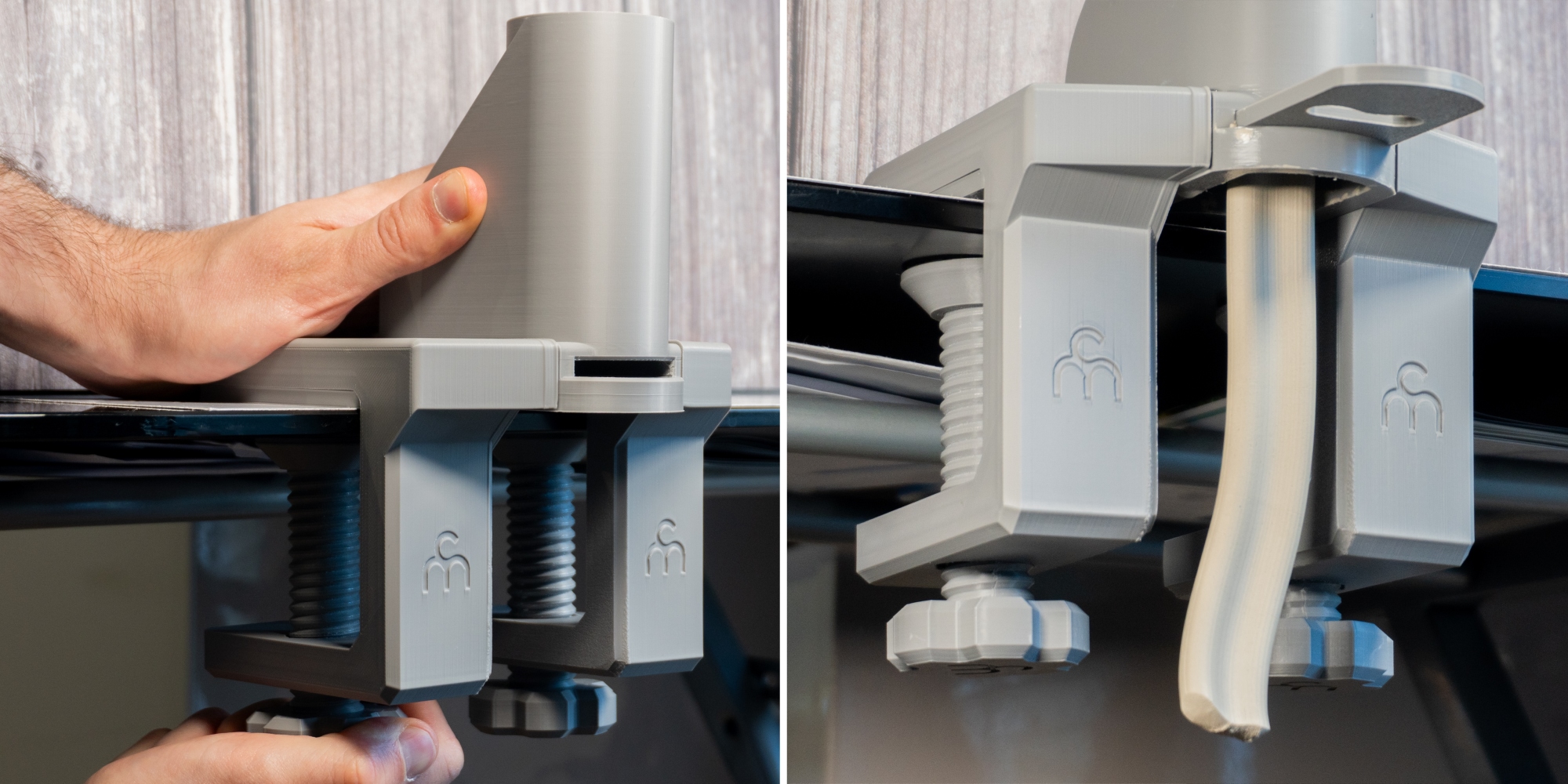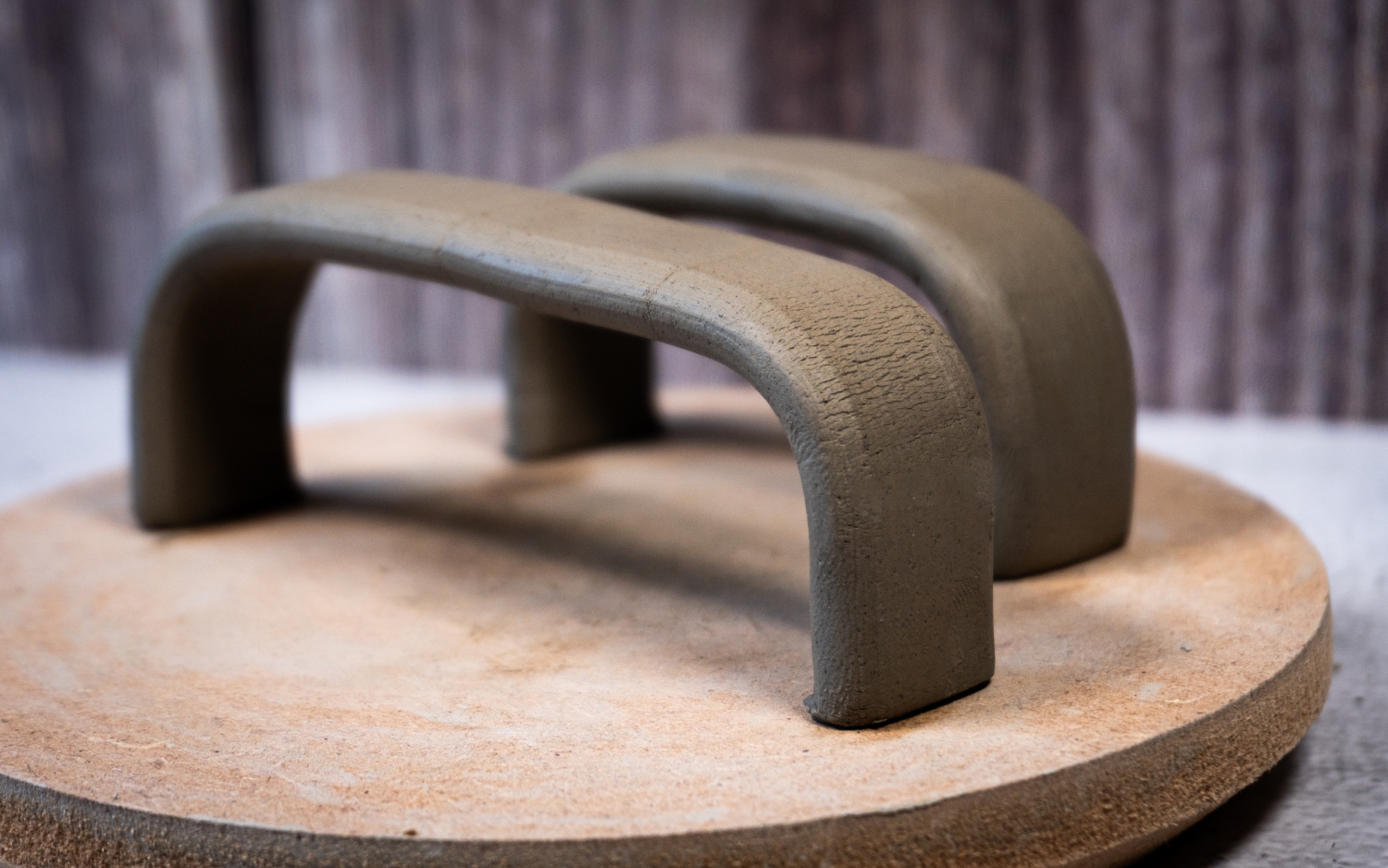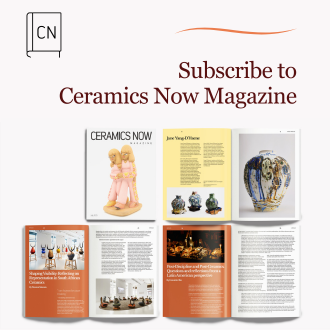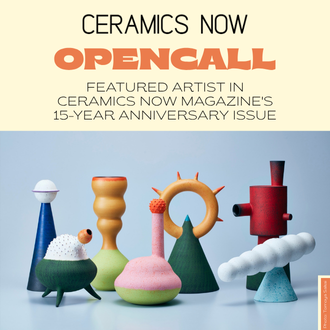Every ceramicist relies on a core set of pottery tools to bring their work to life. Whether you’re handbuilding, throwing, or slip casting, certain tools are essential for staying productive, creating consistent results, and letting creativity flow without interruption.
One of the most versatile and time-saving tools, especially for handbuilding, is the clay extruder. It transforms repetitive tasks like rolling coils or pulling handles into quick, clean, and repeatable steps. In seconds, you can produce uniform coils, handles, and decorative ribbons, freeing your energy for design, detail, and finishing.
With swappable dies, a clay extruder also opens the door to creative exploration, making it easy to play with texture, scale, and custom forms. Whether you’re batch-producing mugs or sculpting one-of-a-kind pieces, the extruder becomes a powerful studio ally that supports both artistic freedom and efficient production, all while helping minimize clay waste along the way.

Let’s explore how an extruder can integrate with either handbuilding or throwing processes:
Clay Extruders in Hand Building
Having a clay extruder for hand building is extremely useful because it can produce uniform coils for coil-built vessels or sculptures, it can form handles for cups, mugs, pitchers, or jugs, and it can create straps, ribbons, or even decorative trims to enhance your pieces.
Here are some of the main benefits of using an extruder in your handbuilding process:
• Fast, Uniform Coil Production – Saves time and creates consistent coils for slab-and-coil construction or sculptural forms.
• Effortless Handle Creation – Perfectly shaped handles for mugs, jugs, or pitchers in seconds, which means no more hand-rolling or shaping fatigue.
• Add Decorative Elements With Precision – Use shaped dies to create borders, straps, or texture lines that elevate visual interest.
• Supports Modular & Architectural Designs – Allows for the mass production of identical parts used in larger ceramic structures or installations.
• Reduces Physical Strain – Certain designs minimizes wrist and hand fatigue compared to traditional coil-rolling.

Clay Extruders in Throwing
When it comes to throwing, you will most likely use an extruder for supportive purposes such as pre-making handles for mugs, jugs, teapots, or creating appliqués, sprigs, or textured add-ons for thrown vessels. You may also use it to make extruded feet or lugs to attach after throwing or produce even coils to reinforce or attach to thrown slabs (especially for large vessels or sculptural work).
Below are some of the main benefits of using an extruder after you’ve thrown your piece:
• Pre-Formed Handles for Wheel-Thrown Mugs or Pitchers – Consistent sizing and shape ensures your thrown forms have a matching professional attachment.
• Add-On Elements for Thrown Work – Use extruded ribbons or trims as embellishments or foot rings on thrown vessels.
• Saves Time in Production Settings – Great for studio potters making dozens or hundreds of similar pieces which speeds up the non-throwing steps.
• Improves Consistency Across Batches – Makes it easier to maintain a cohesive style across multiple thrown pieces with standardized attachments.
• Encourages Mixed-Technique Creativity – Blending thrown and extruded forms allows for more innovation in your ceramic style.

How To Choose Your Extruder
Not every clay extruder is made the same, and each one comes with their own pros and cons. There’s no perfect extruder that has every feature, so you need to balance the benefits that are important to you when choosing one. Here are some of the things to be aware of so you can select the best one for you:
Ergonomics & Usability
Many extruders require significant pressure to operate, which can lead to hand fatigue over time. Below are the main types, each with its own ergonomic pros and cons:
• Lever-action handheld extruders use a squeeze grip to push clay through the die. They distribute force well through larger muscle groups like the arms and shoulders but can still tire your arms with prolonged use since you need to hold them.
• Wall- or bench-mounted extruders remove the need to hold the tool, making them ideal for high-volume use. However, many of them rely on upper body force or leverage, which can be challenging depending on setup.
• Plunger-style extruders require downward pressure using your hands and arms. While simple, they can quickly become uncomfortable due to limited leverage and body weight support.
• Twist-action extruders provide strong torque without downward pressure, but require a rotating motion that may strain the wrists and forearms over time.
There’s no universally perfect option – the best extruder is the one that fits your comfort, workflow, and clay type.

Refilling Efficiency
Many extruders tend to have relatively small barrel sizes which means having to refill more often, slowing down your productivity. If possible, see if you can find an extruder with a larger barrel size so you don’t have to refill too often.
Limitations in Use
Another common challenge is the lack of flexibility in design. Many extruders come with only a few basic dies, and swapping them can be frustrating due to poor alignment or stuck fasteners. Ideally, the extruder you choose should offer a wide range of additional dies – and even custom options – so you can create exactly the shapes and profiles you envision.


Fixed vs. Removable
If you’re considering a workbench extruder, mounting it with screws offers maximum stability, but requires drilling permanent holes. For artists who rent or move between studios, a removable extruder is a better option, allowing easy setup on any workbench without damage or permanent fixtures.

Replacement Parts
Replacement parts can often be hard to source, especially for imported brands or tools with proprietary components, which leads to frustration when something small breaks and renders the entire tool unusable. That’s why it’s important to go with a company that can easily & quickly supply replacement parts.
Cleaning & Maintenance
Cleaning is a common frustration with many extruders, as clay often gets stuck in seams, threads, and corners, making disassembly messy and time-consuming. Look for handheld or removable workbench extruders that are easy-to-disassemble to simplify cleanup and avoid clay buildup or waste.
Learning Curve or Workflow Interruptions
Even a well-designed extruder can be frustrating if it’s slow to set up, hard to clean, or lacks clear instructions which disrupts your creative flow. The ideal extruder should be quick to assemble and come with clear, easy-to-follow guidance.

Next Steps
Now that you understand the benefits of using a clay extruder and what to look for, remember, no tool is perfect, but the right one depends on your priorities and workflow.
If you’re after a removable bench-mounted extruder with multiple dies, solid durability, and easy setup, check out the Ceramind® Tools clay extruder. You can grab 20% off your first order when you join the newsletter. They also offer a wide range of studio essentials like clay stamps, texture rollers, and slip cast molds (among others) to help you get the most out of your studio time.




















